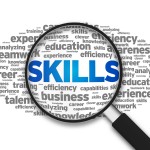 We have been eagerly awaiting the arrival of the next generation in the workplace, and it is here: Generation Z (Gen Z), individuals born after 1995. With 23 million strong, this growing segment of the population has the attention of professionals ranging from human resource vice presidents to marketing executives. Those Gen Zs who are not pursuing college are already working; those who have chosen college will be hitting the workplace in the next three years.
We have been eagerly awaiting the arrival of the next generation in the workplace, and it is here: Generation Z (Gen Z), individuals born after 1995. With 23 million strong, this growing segment of the population has the attention of professionals ranging from human resource vice presidents to marketing executives. Those Gen Zs who are not pursuing college are already working; those who have chosen college will be hitting the workplace in the next three years.
In 2014, Sparks & Honey released its report on Gen Z. Their SlideShare presentation, Meet Generation Z: Forget Everything You Learned About Millennials, is illuminating and will answer many questions you have about this young audience.
Since I talk about multiple generations in my communication programs, it’s important to educate myself on this rising generation. There is much to learn about the different generations, what sets them apart, what they have lived through, what motivates them and how they communicate.
Here are a few interesting facts that to share:
According to the 2012 US Census Bureau, Gen Z currently makes up the largest population of all five generations at 25.9%, followed by Millenials (or Gen Y) at 24.5%, Baby Boomers at 23.6%, Gen X at 15.4% and Swing (or Traditionalists) at 10.5%.
Gen Z’s are socially aware and want to make a difference, are more entrepreneurial, are inclusive and embrace diversity, enjoy creating things and have a global social network.
These digital natives multitask using five screens (electronic devices) vs. Millennials who use just two screens simultaneously.
They are more private, preferring incognito social platforms like Snapchat, Whisper and Secret to more public platforms like Facebook.
If you want to connect better with Gen Z, Sparks & Honey recommends:
- Recognize their diversity.
- Communicate using images, like emojis, symbols, pictures and videos.
- Stay connected using shorter, more frequent messaging.
- Treat them as equals; don’t talk down to them.
- Include them in collaborative efforts.
- Feed their curiosity (and since they’re foodies, feed them too!).
The full report can be found at the Sparks & Honey website.
An excellent Gen Z Instagram designed by Marketo, using the top statistics from the Sparks & Honey report, provides an excellent quick visual reference.
Get smart about this next generation. They are entering the workplace with determination and ready to make a difference.









